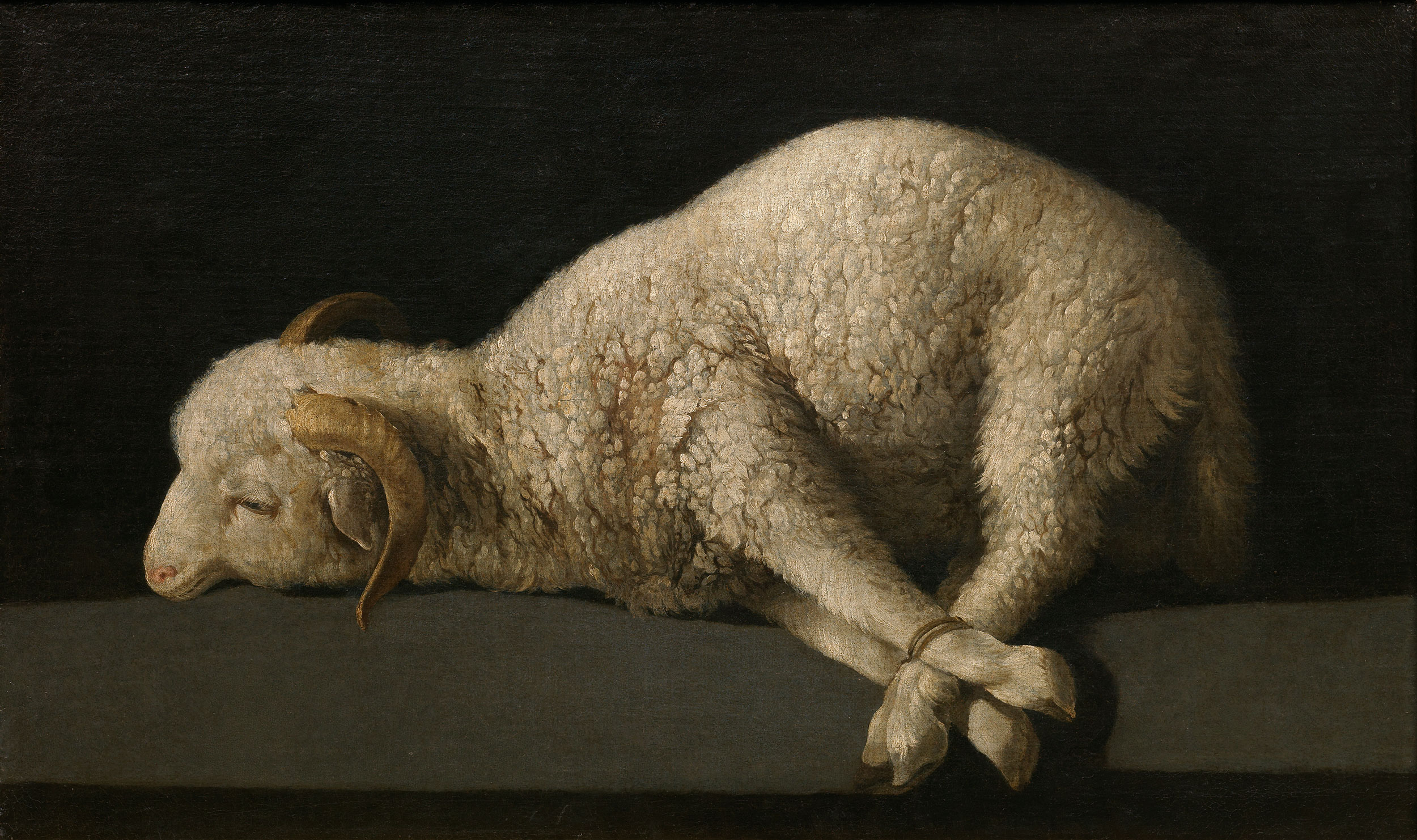General News · April 18, 2019
The Terrible Beauty of the Lamb
Not everyone found the Passover Lamb as beautiful as I did.

By Timothy Palmer Curl
April 18, 2019
So Jesus said to them, “Very truly, I tell you, unless you eat the flesh of the Son of Man and drink his blood, you have no life in you.”—John 6:53
Don’t kill the baby lamb!—Facebook comment, February 2019.
A few days before Ash Wednesday, I went to the senior pastor with a confession. The promotion we were running on Facebook and Instagram about our daily Lenten devotionals was getting some intense blowback. Several people—a minority, but an angry one—were offended.
The image we used in the promotion was the same that graces the cover of our 2019 Lenten Devotional booklet—Agnus Dei (Lamb of God), by the 17th-century Spanish artist Francisco de Zurbarán. Using the technique of still-life painting, Zurbarán depicts a white lamb lying placidly, eyes open, feet bound.
“Such a disturbing photograph,” one woman wrote. “Surely there are others you could have used. Not a Christian church my family would ever want to attend :(“
Our Lenten marketing campaign was just beginning, and I was afraid I’d stumbled out of the gate.
“You didn’t do anything wrong,” Scott said. “This is a difficult story. It is painful to look at the bound lamb and the crucified Jesus. I suspect this is why Paul calls the cross a scandal and a stumbling block. We don’t want to imagine harm coming to the lamb or Jesus. But the hard truth is that innocents are harmed in this world. This is Good Friday in a nutshell.”
I had always found the Zurbarán painting to be beautiful. But I never thought about it in a literal sense, only a symbolic one. In one of his recent Lenten reflections, the Jesuit theologian Richard Rohr wrote about this: “In the Hebrew tradition, the Passover lamb was a perfect, unblemished sheep or goat that apparently lived in the family home for four days before it was sacrificed (Exodus 12:1-8). That’s just long enough for the children to fall in love with the lamb.” Yet, Rohr continues, “It is precisely the beloved and innocent ‘lamb’ that must die.”
For Rohr, the innocent lamb symbolizes not only the innocent Christ, but also the illusion of the innocent self, a false image we must shed if we are to grow spiritually. “We must accept that we are all complicit and profiting from the corporate ‘sin of the world’ and no one is pure or innocent,” he writes.
On social media, I made an attempt at justification by explaining the history of the Passover Lamb as an ancient Christian symbol. To no avail.
“You could use a different painting! As Christians we know the lamb of God, no need to upset everyone who cares for all beings.”
“Horrible picture!!!! This is not what you see during length!!!! [sic]”
“You think this the way to show love for God???”
That’s when my colleague Werner Ramirez, our associate pastor, texted me.
Reading the comments on the insta… people get the symbolism more than they think! We should be horrified at an innocent lamb to be slain.
Gave me two thoughts:
1) what if they knew that us humans (all of us) tied up the lamb
2) and we continue to tie up innocent lambs the way we treat the poor and marginalized #blacklivesmatter #translivesmatterFor sure just wrote a mini sermon in my head
When I was in seminary, I took a class from the late Dr. James Cone, the man who wrote the book (several of them) on black theology. He introduced me to an essay by the theologian Reinhold Niebuhr on “the terrible beauty of the cross.” “Only a tragic and a suffering love can be an adequate symbol of what we believe to be at the heart of reality itself,” Niebuhr wrote.
For Cone, the cross was a first-century lynching tree. Its “terrible beauty” is revealed today wherever humankind is doing its worst. “The gospel of Jesus is not a beautiful Hollywood story,” Cone wrote. “It is an ugly story, the story of God snatching victory out of defeat, finding life in death, transforming burning black bodies into transcendent windows for seeing the love and beauty of God.”
Part of me wanted to ask our social-media dissenters, “If you don’t like seeing a bound lamb, what would you prefer? An innocent man, beaten and bloody on a tree?” But I let the comments go. We all have to arrive at Calvary on our own, then come to terms with what we find there.
Fortunately, the promise of our faith is that the story never ends on Good Friday. We are saved by the miracle of Easter.
“God so loves the world that God steps into the hardest of places to be with us,” Scott said. “God doesn’t harm the innocent. God becomes the sacrificial lamb to redeem us.”